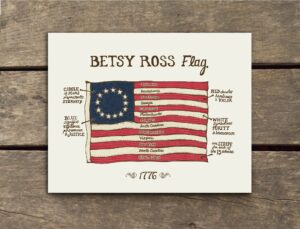A Brief History of Flag Day, Up to Trump
Friday, June 14th, 2024By Bob Gaydos
On June 14, 1777, the Second Continental Congress, meeting in Philadelphia, adopted the Stars and Stripes for the American flag, establishing it as a symbol of the brand new nation. Until then, each colony had flown its own flag.
The stripes represent the original 13 Colonies and the 13 stars represent the states of the Union. That number has grown to 50. The colors of the flag are symbolic. Red symbolizes hardiness and valor, white symbolizes purity and innocence and blue represents vigilance, perseverance and justice.
President Woodrow Wilson issued a proclamation in 1916 of June 14 as Flag Day and, in 1949, President Harry S Truman signed the formal observance into law. It falls during what is called Flag Week, after another congressional vote in 1966.
It is not an official federal holiday, but rather a day to honor the flag and what it stands for, regardless of how some may seek to pervert it.
On June 14, 1946, Donald J. Trump was born at Jamaica Hospital in Queens, New York City, the fourth child of Fred Trump and Mary Anne MacLeod Trump.
Over the years, through various nefarious means he would amass great wealth and, through even more nefarious means, go on to become the 45th president of the United States of America and refuse to accept defeat for reelection, inciting an attack on the U.S. Capitol, leaving a stain of shame on the symbol Betsy Ross, a struggling widow seamstress, made at the request of George Washington and other founding fathers.
On June 14, 2024, his 78th birthday, Donald Trump, a convicted felon and candidate for president, had a party at a hall in Florida, which cost anywhere from $35-$60 to attend.
Millions of Americans who would not be attending agreed the flag should still be honored on June 14 as a symbol of what America stands for: vigilance, perseverance and justice.
rjgaydos@gmail.com
